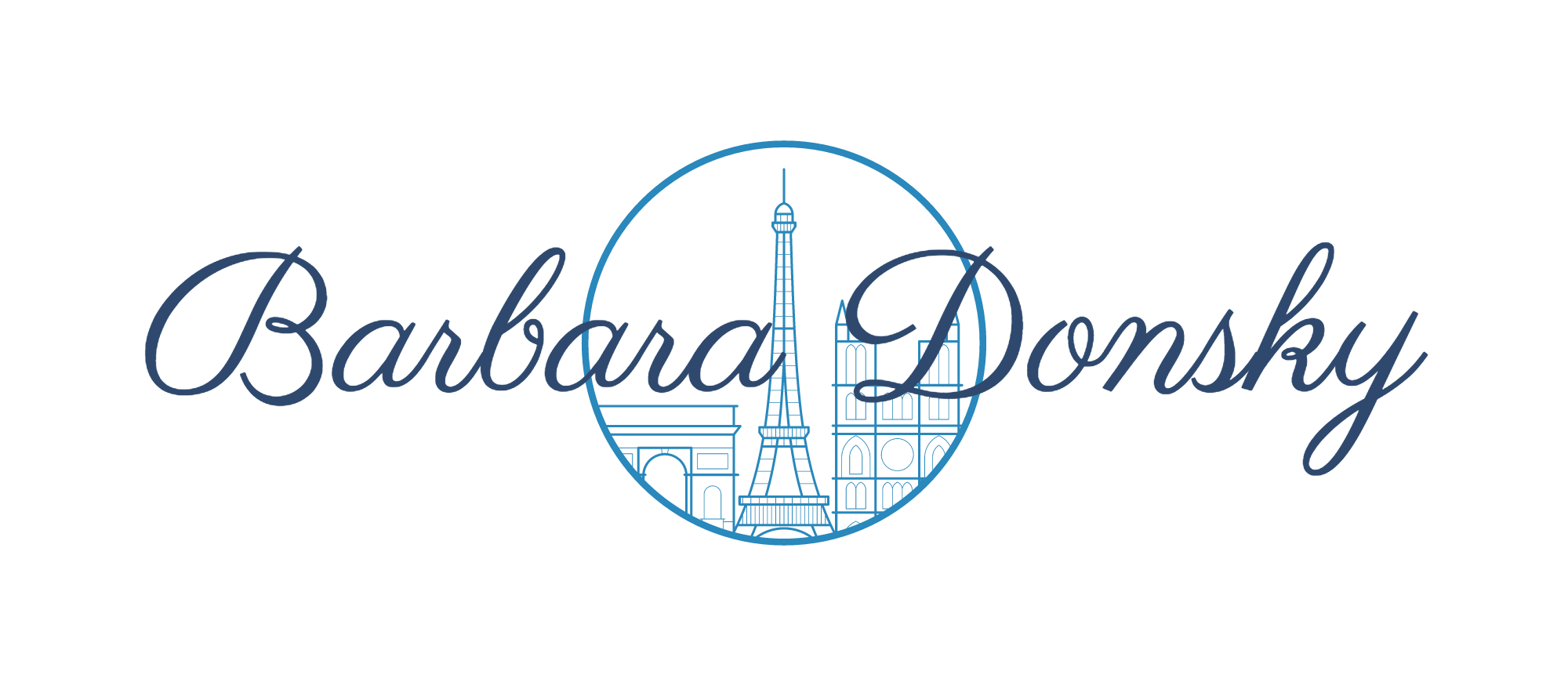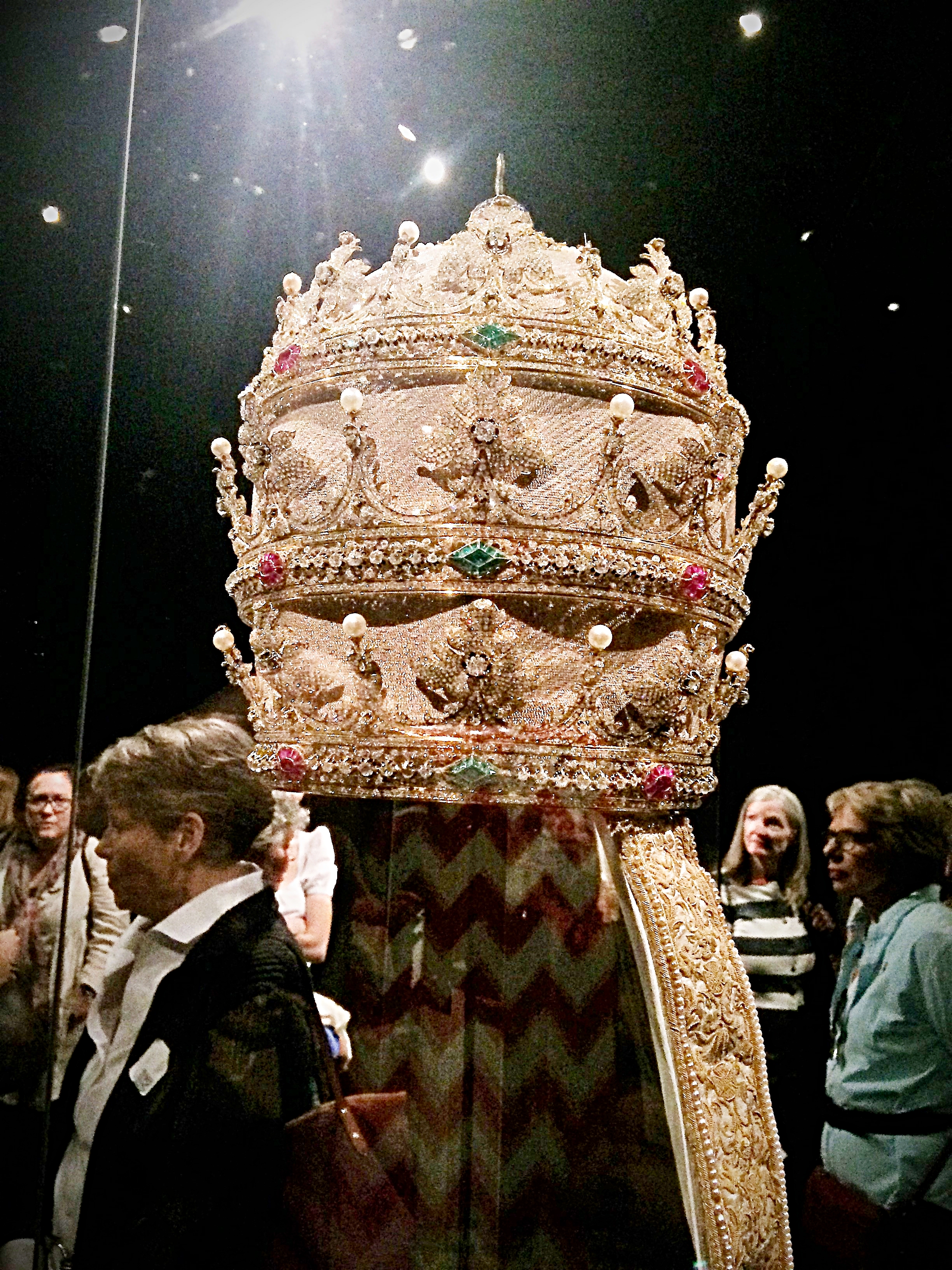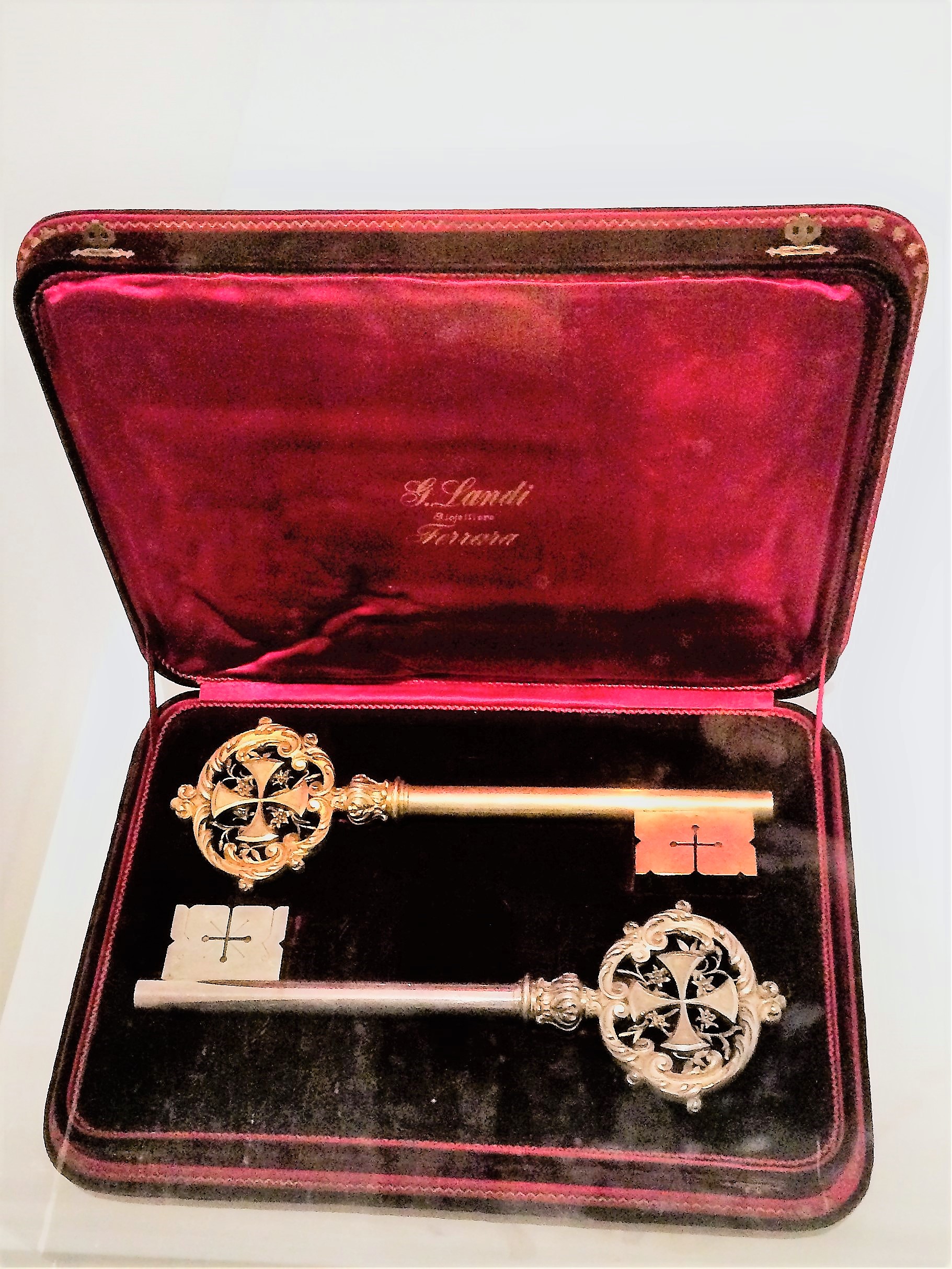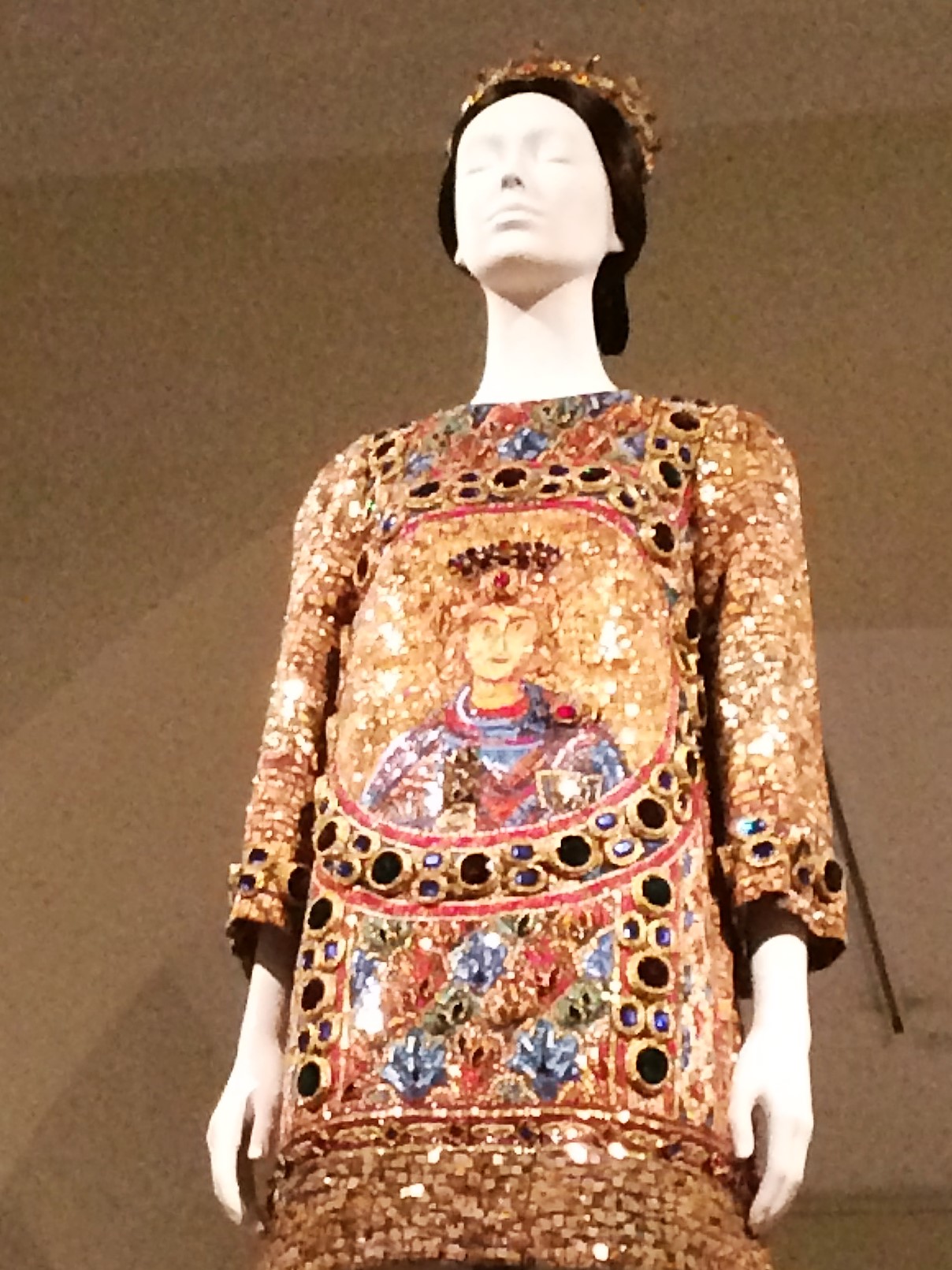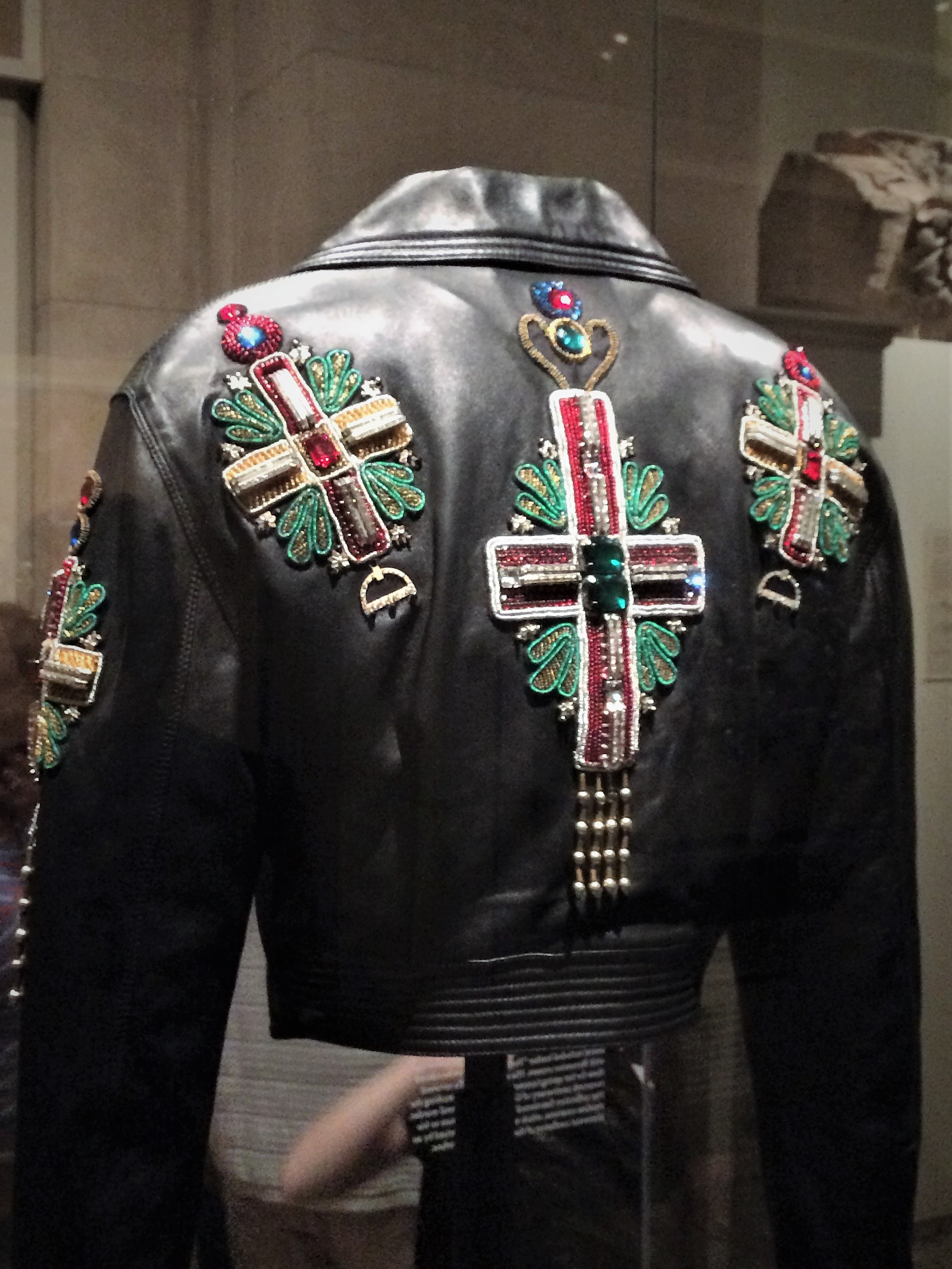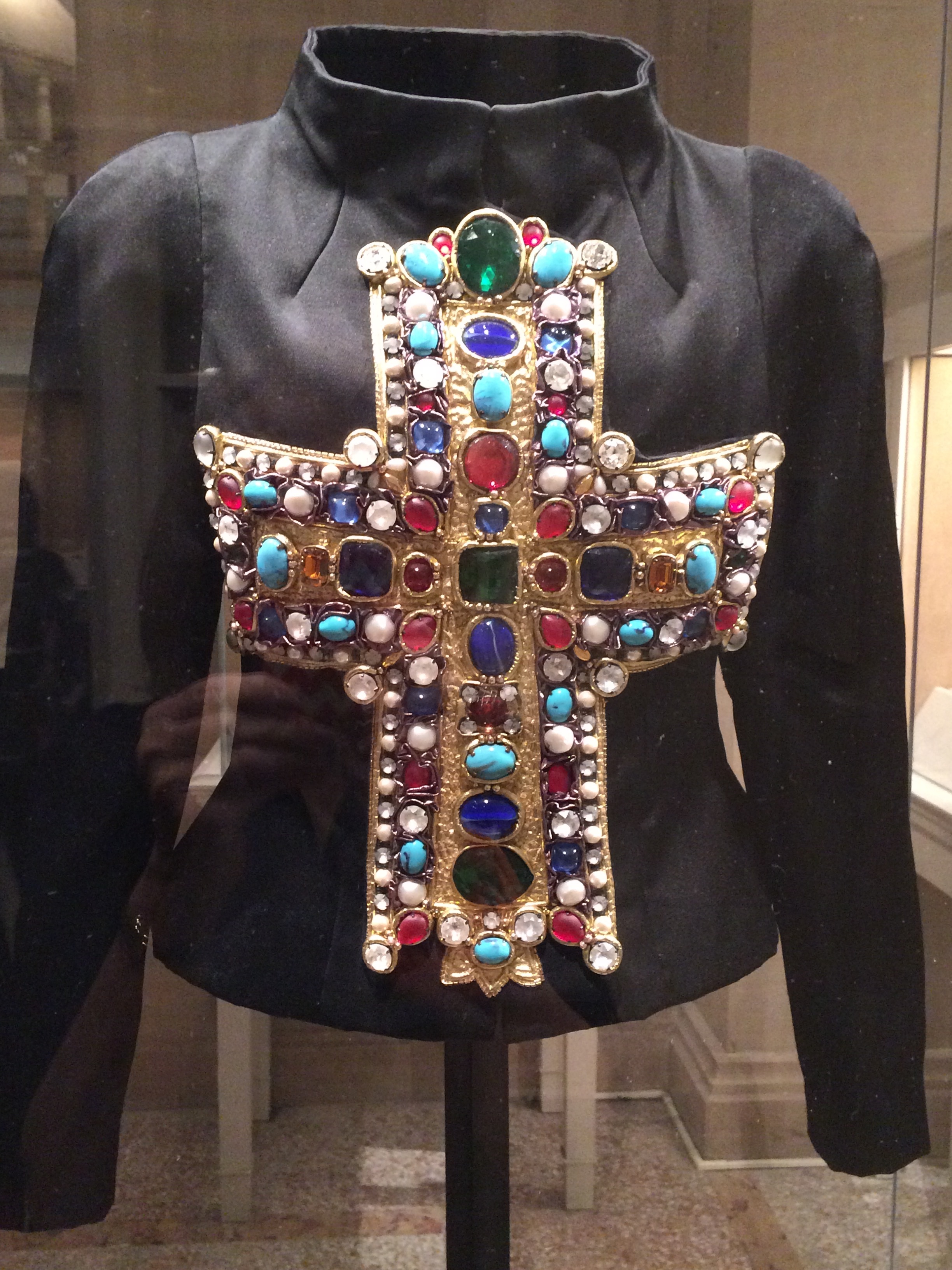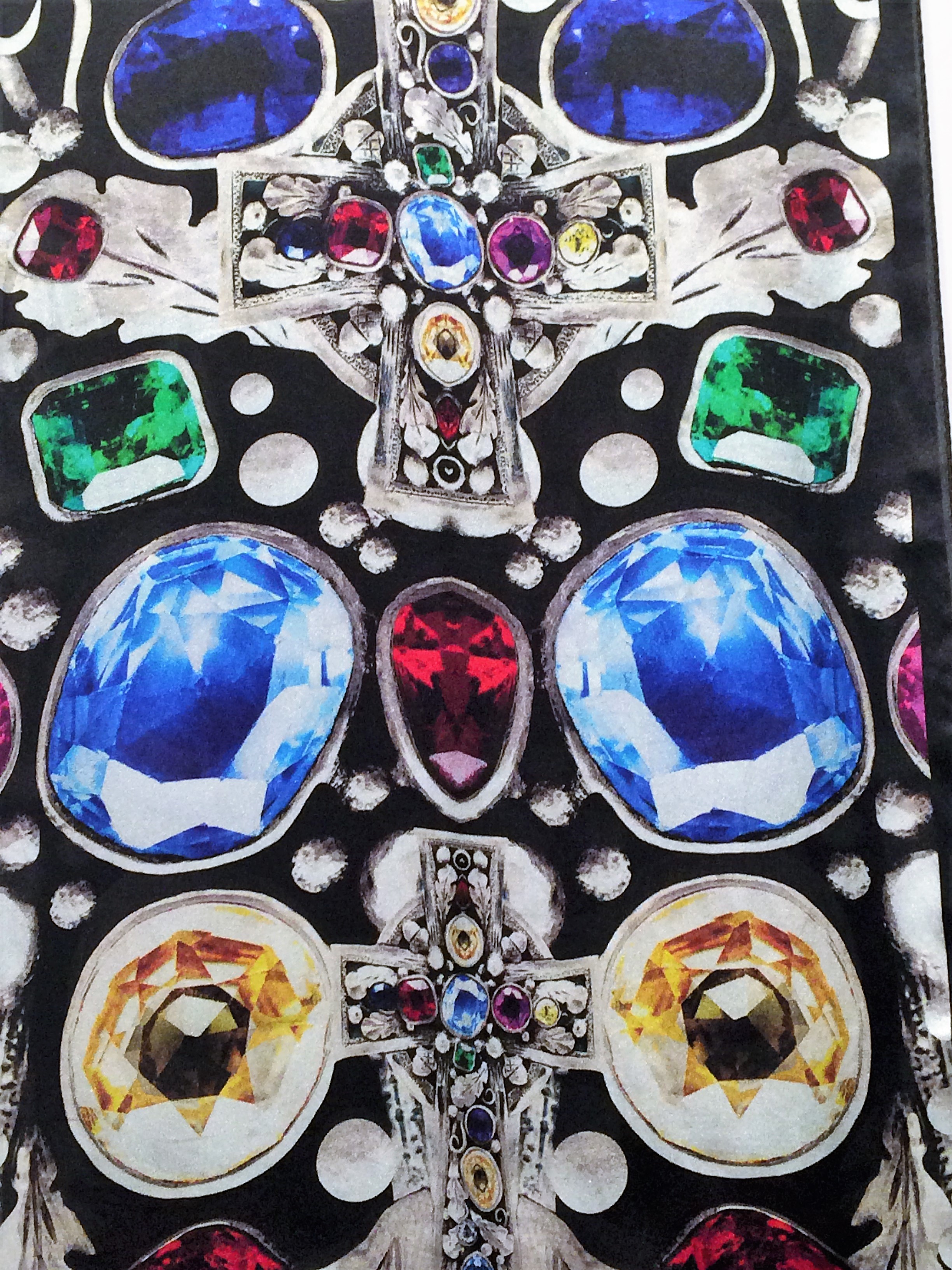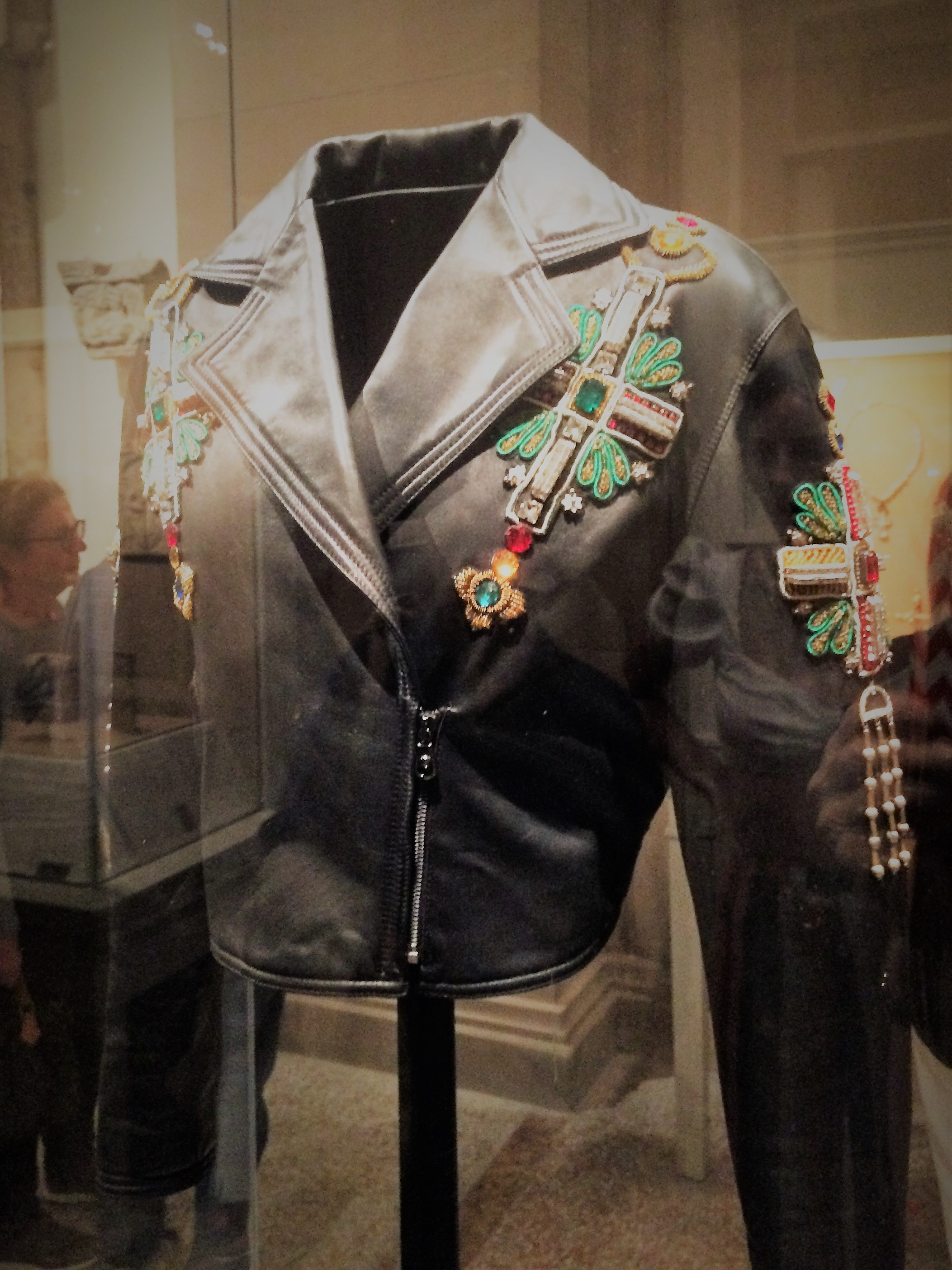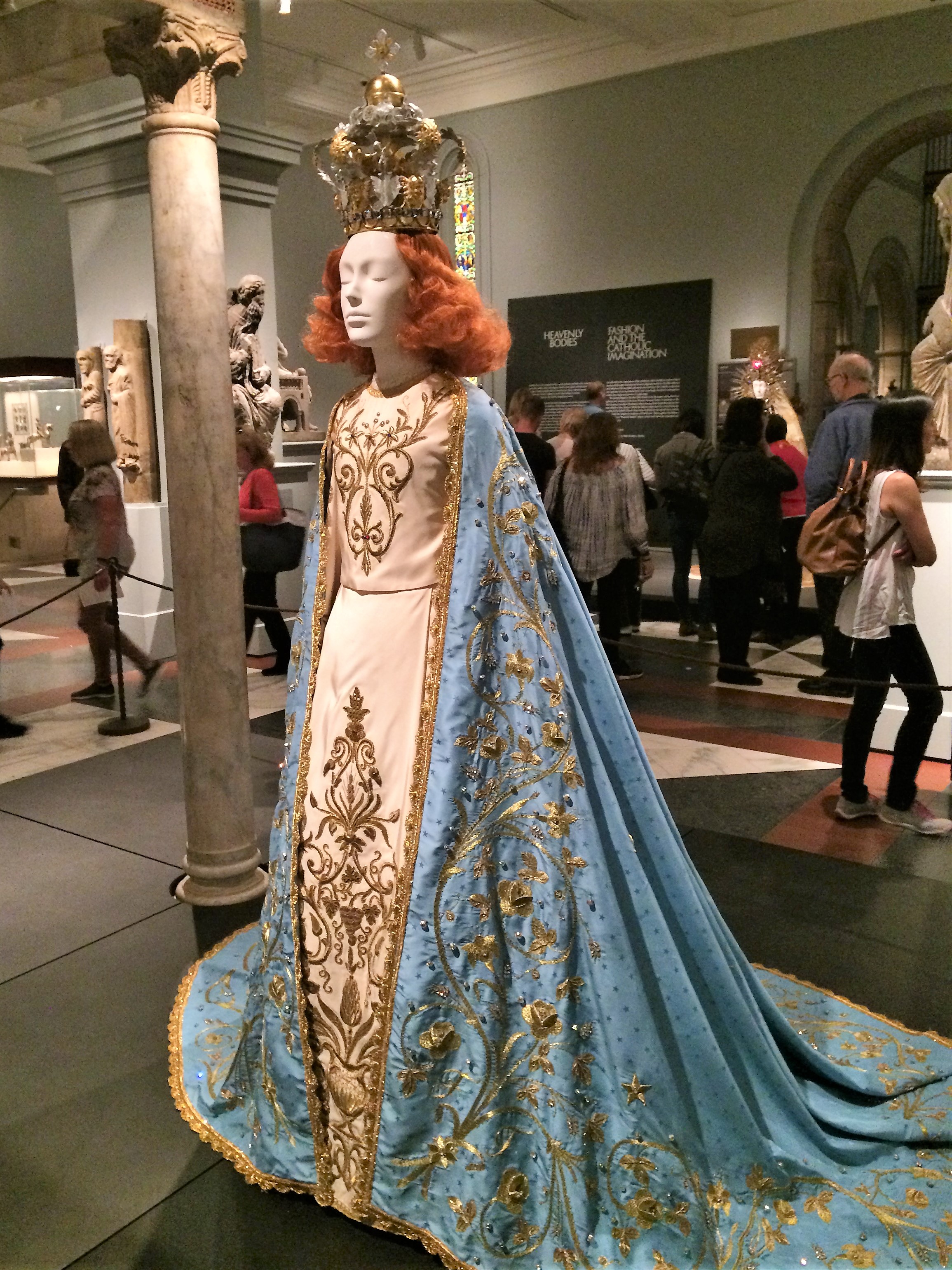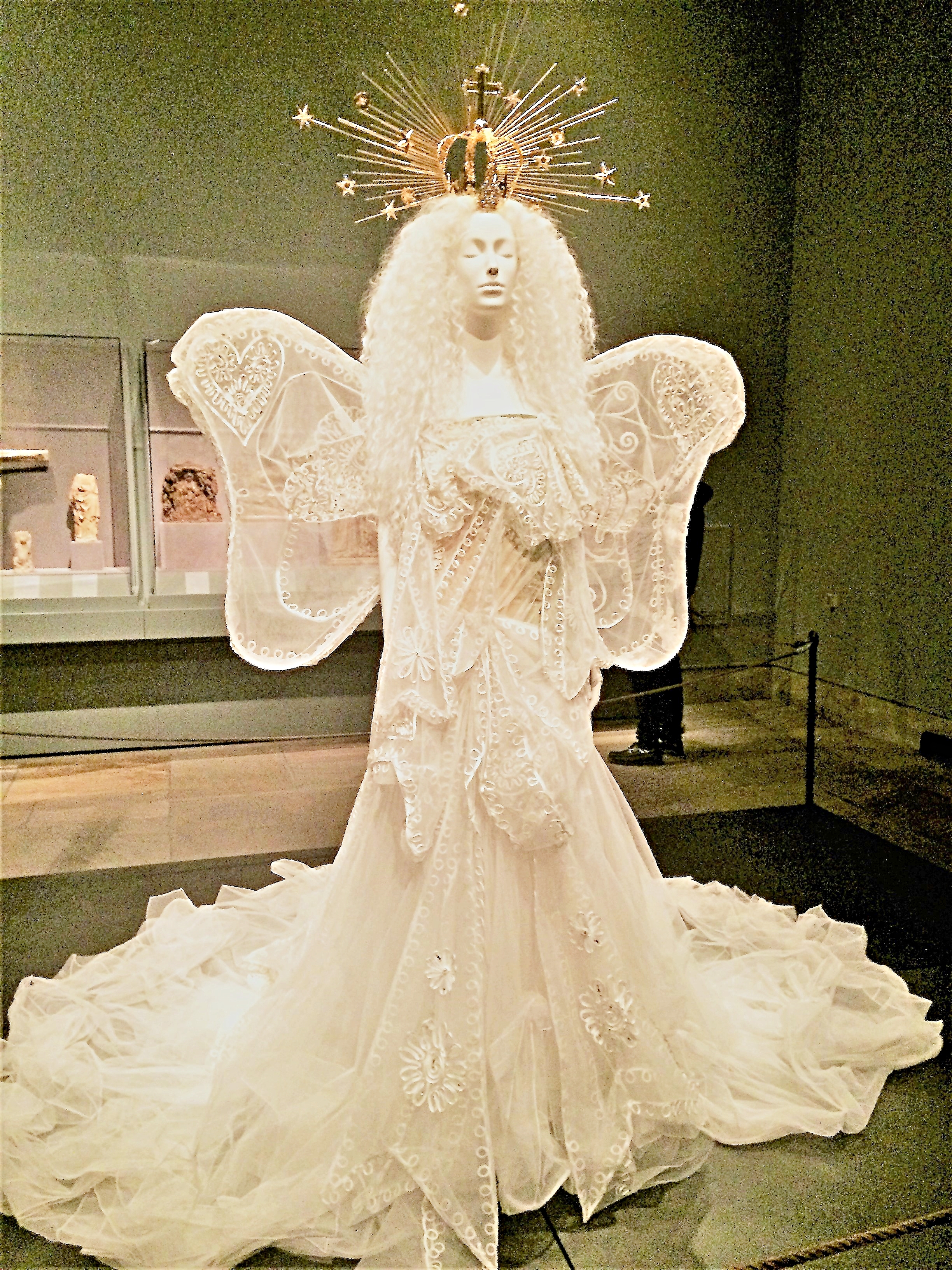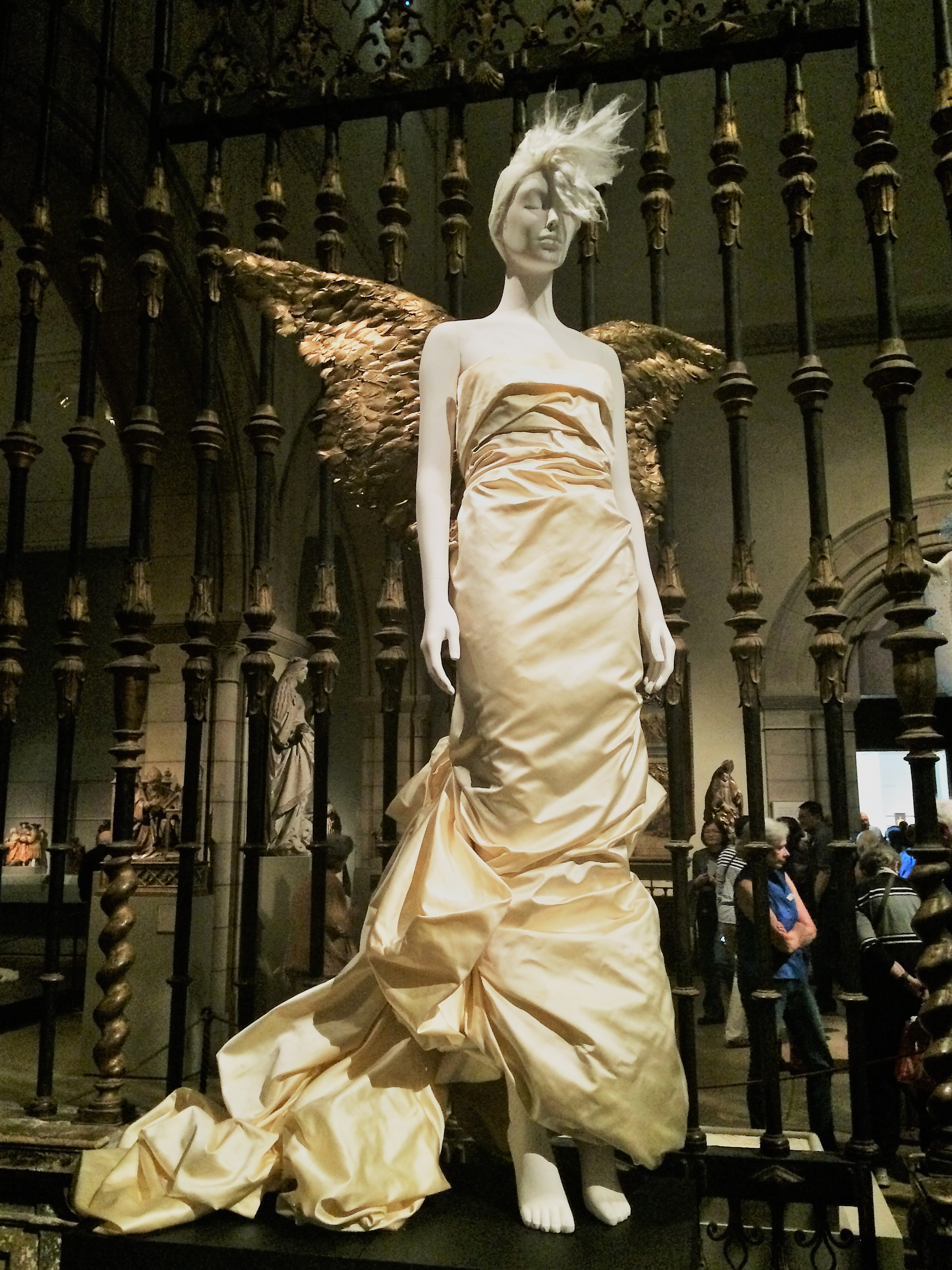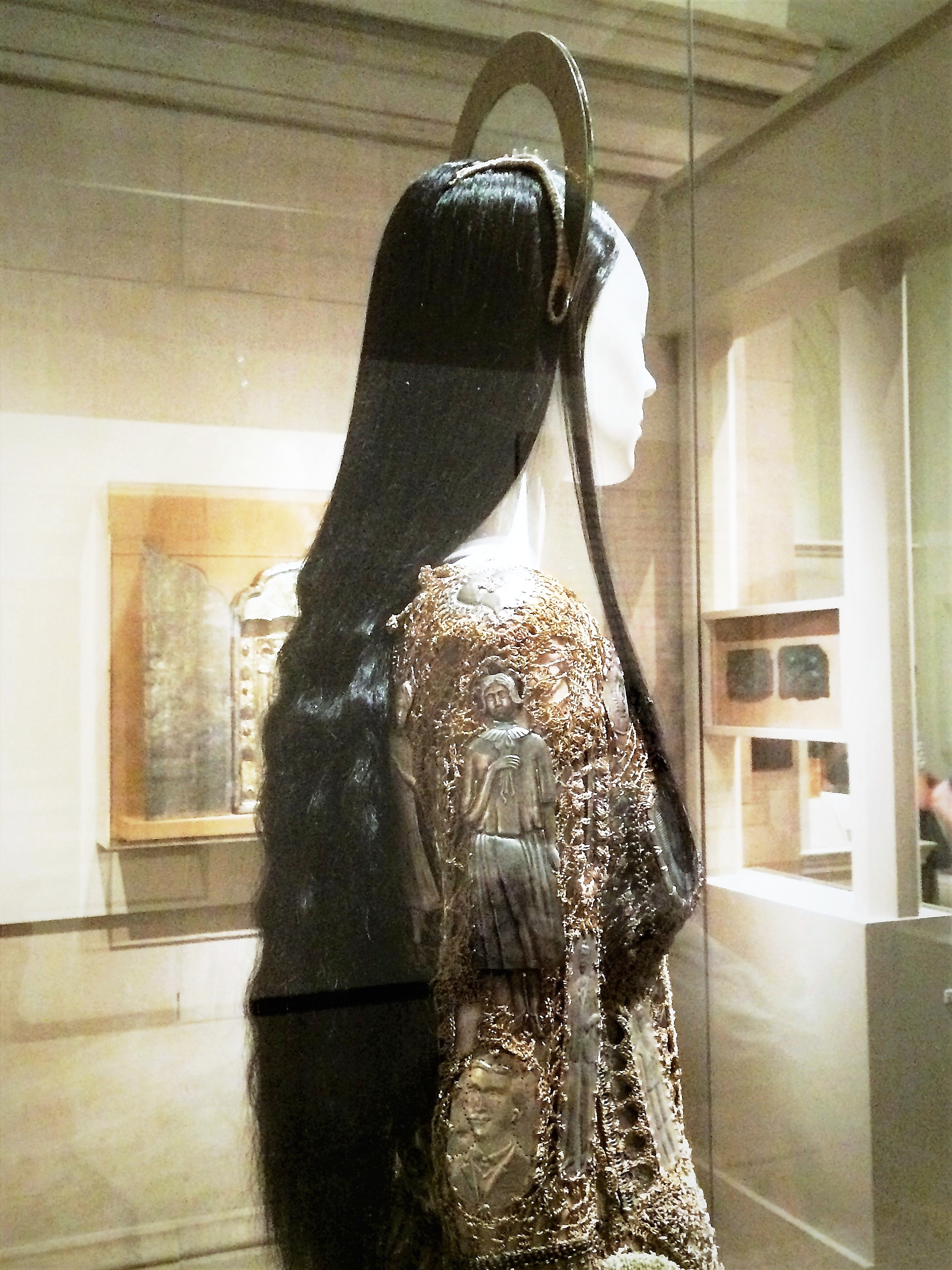Heavenly Bodies: A Gift from the Haute-Couture Gods
Heavenly Bodies: Fashion and the Catholic Imagination, currently at the Met, is an enchanting show featuring rare treasures from the Sistine Chapel Collection that have never traveled before, and 150 exquisite creations by designers raised in the Catholic tradition. In great abundance and with consummate attention to detail, the exhibition illustrates the extraordinary ways in which designers, from Coco Chanel to Donna Versace, have adopted the imagery, metaphors and storytelling integral to the Catholic faith.
According to the theologian and sociologist Andrew Greeley, this appropriation by designers characterizes "the Catholic imagination." An imagination influenced by the liturgies and vestments as well as by the rosary beads, votive candles, holy water, stained glass, and the abiding image of Christ on the cross.
Beauty and belief have played a central role in Catholic liturgy and tradition, so much so that it might be more accurate to say: Beauty is to belief as splendor is to transcendence.
The exhibition, made possible by Christine and Stephen A. Schwarzman, was designed by Diller Scofidio + Renfro. In three distinct parts, it resembles a pilgrimage where you go from place to place, beginning at The Met Fifth and concluding at The Met Cloisters, a few miles north. I've not yet seen that portion, but a few critics have commented that with its emphasis on the quieter aspects of the faith, rather than the more public ones, the Cloisters is the most moving part of the exhibition. I will be visiting shortly, so there’s more to come! You could say that this parade of liturgical and secular fashions involves visiting a trinity of spaces, one show on three sites. A formula familiar to Christians.
I began the pilgrimage at the Anna Wintour Costume Center on the lower level where upwards of four dozen treasures belonging to the Sistine Chapel Collection are on display. At the request of the Vatican for "a clean show," as these papal vestments and regalia are still in use, the treasures are in cases, which in no way interferes with seeing their beauty. What was mildly disappointing was that upon entering the first of the galleries you are looking at unadorned walls painted a chalk-white. The idea, presumably, was to let the magnificent embroidered capes in that room speak for themselves, and that they do. The treasures seen above in another one of the galleries are (left) a tiara containing 19,000 precious stones that had been a gift of Queen Isabella of Spain to Pius IX (1846-79); (center) the "Keys of St Peter" given to Leo XIII in 1903, the silver key representing earthly possessions, the gold the kingdom of heaven; and (right) the bejeweled papal staff. (Sorry, I lost my notes on that one.)
It took a lot to woo Vatican, but Andrew Bolton, the Wendy Yu curator in charge of the Costume Institute, perisited and this is the dazzling result.
After visiting the Anna Wintour Costume Center, I headed upstairs to see the secular fashions, beginning in the parallel Byzantine galleries (above) located on each side of the main staircase and continuing in the Medieval courtyard. In the Byzantine galleries were five dresses from a recent collection by Dolce & Gabbana. Suspended above the heads of the crowd and surrounded by Byzantine frescoes, the dresses were festooned with beads, sequins and hand-sewn paillettes (thin strips of woven metal) showing icons of Mary inspired by the frescoes at the Monreale Cathedral, one of Sicily’s greatest treasures.
Moving on to the Medieval courtyard, there was a leather jacket (center, left) by Christian Lacroix encrusted with polychrome crystals and gold seed beads. This jacket was featured by Anna Wintour on the first cover of American Vogue, when she became editor in 1988. The cross as a sign of Christianity traces its origin to Byzantine times. And the sparkling gems you see above (center, right) can be yours. The photo is of a silk scarf in the Met's gift shop! To celebrate, the Met is offering specially designed items including an array of jewelry, silk scarves, and even a bomber jacket with a cross, all of which have been inspired by religious reliquary. And then there were the gowns...
(Far left) The hand-dyed and hand-embroidered blue ensemble by Ricardo Tisci, was based on the original created by The Poor Benedictine Nuns of Lecce, Italy. The garment took 3000 hours of labor to complete and "testifies to the on-going appeal of the cult of the Virgin Mary." (Left, center) Christian Lacroix, Wedding ensemble Autumn 2009 haute couture. (Right, center) Baroque evening ensemble for Autumn-Winter 2000-2001 for the House of Dior by John Galliano. (Far right) Jean Paul Gaultier: "Ex-Voto" evening ensemble, with appliqued holograms. N.B: the figure on the sleeve. Do you see it?
The collection of works by 55 designers is so much more than I can possibly show or tell. But it answers, in part, that age-old question: Where do creatives find their sources of inspiration? I can't wait to see the third part of this parade of fashions at the French-Renaissance Met Cloisters. For what more perfect setting than the magnificent Cloisters?
Speaking of perfect settings, behind the Medieval courtyard, the exhibit continues in the Lehman Wing. If you go behind the main gallery of the Lehman Wing you will find exquisite Renaissance-style rooms filled with silence and marvelous paintings.
Which is where I found the Dutch artist Petrus Christus' s painting "A Goldsmith in His Shop" (1449). A placard on the wall says that Christus was the leading painter in Bruges after the death of Jan van Eyck. It's thought that the young couple is looking to purchase a ring. But observe the elegant dress worn by the woman. No polychromed beads, no sequins or spangles, but understated elegance nonetheless.
That's all for today, mes amis. But before you go ladies, which of the above gowns would you like to wear? If you tell me your favorite, I'll tell you mine. The show runs until October 8, 2018. Hope to see you back next week when I'll have the coffee ready. Jusque-là, que la vie soit bonne pour toi , may life be good to you. And remember caring is sharing...Merci beaucoup.
